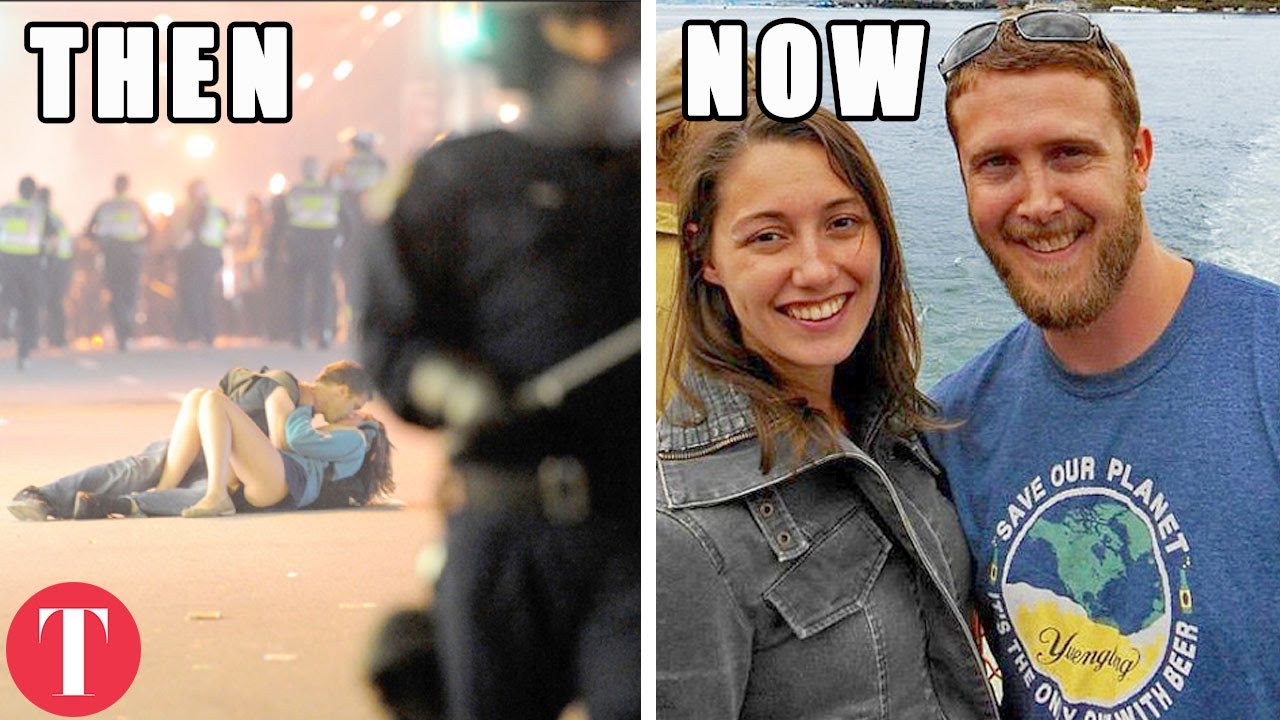The Real Stories Behind 20 Iconic Pictures

Iconic Pics On The Net
Find out the true stories behind world’s most famous pictures from the Internet.
Who was the Afghan Girl in the photograph taken by Steve McCurry, and how did it become a symbol of Afghan refugees during the Soviet-Afghan War?
The world of photography is one that has always fascinated and captivated individuals. Photographs have the power to transport us to different times, places, and emotions, and it is the ability of these images to evoke such powerful feelings that makes them truly iconic. However, often the stories behind these images can be just as fascinating as the pictures themselves.
Here are the real stories behind 20 iconic pictures that have captured the world’s imagination:
1. “Tank Man” – This photograph was taken during the 1989 Tiananmen Square protests in Beijing, China. The image depicts an unidentified man standing in front of a line of tanks. The man is believed to have been protesting against the Chinese government and the use of military force against peaceful demonstrators.
2. “The Falling Man” – This photograph was taken on the morning of September 11th, 2001, by Associated Press photographer, Richard Drew. The image depicts a man falling from the North Tower of the World Trade Center in New York City. The identity of the man remains unknown.
3. “Migrant Mother” – This image was captured by photographer Dorothea Lange in 1936 during the Great Depression. The woman photographed, Florence Owens Thompson, was a migrant worker and mother of seven children. The photograph became an iconic symbol of the hardships faced by Americans during this time.
4. “The Afghan Girl” – This photograph of a young Afghan girl was taken by National Geographic photographer Steve McCurry in 1984. The girl, later identified as Sharbat Gula, became a symbol of the plight of Afghan refugees during the Soviet-Afghan War.
5. “Saigon Execution” – This photograph was taken by Eddie Adams during the Vietnam War in 1968. The image depicts South Vietnamese General Nguyen Ngoc Loan executing a Viet Cong prisoner. The photograph became a symbol of the brutality of the war.
6. “The V-J Day Kiss” – This photograph was taken by Alfred Eisenstaedt in Times Square in 1945. The photograph depicts a U.S. Navy sailor kissing a woman on V-J Day, signaling the end of World War II.
7. “The Runaway Train Cart” – This photograph was taken by Jeff Widener during the 1989 Tiananmen Square protests. The image depicts a man standing in front of a runaway train cart, which is believed to have been trying to break through a crowd of protesters.
8. “The Napalm Girl” – This photograph was taken by Associated Press photographer Nick Ut during the Vietnam War in 1972. The image depicts a young girl running naked, burned by napalm bombs dropped by South Vietnamese forces.
9. “The Blue Marble” – This photograph was taken by the Apollo 17 crew in 1972. It is an image of the entire Earth from space and became an iconic symbol of the environmental movement.
10. “Einstein Sticking Out His Tongue” – This photograph was taken by Arthur Sasse in 1951 on Einstein’s 72nd birthday. The physicist famously stuck out his tongue, creating an image that is a humorous representation of the world-renowned scientist.
11. “Gandhi at his Spinning Wheel” – This photograph was taken by Margaret Bourke-White in 1946. The image depicts Mahatma Gandhi, the leader of the Indian independence movement, sitting at his spinning wheel.
12. “The Earthrise” – This photograph was taken by William Anders on the Apollo 8 mission in 1968. It depicts the Earth rising over the horizon of the moon and became an iconic image of the space program.
13. “The Afghan War Rug” – This photograph depicts a rug woven with images of helicopters, tanks, guns, and other weapons. This rug became an iconic symbol of the war in Afghanistan.
14. “Che Guevara” – This image became an iconic symbol of the revolutionary spirit of the 1960s. The photograph of Ernesto “Che” Guevara was taken by Alberto Korda in 1960.
15. “The Burning Monk” – This photograph was taken by Malcolm Browne during the Vietnam War. The image depicts Thich Quang Duc, a Buddhist monk, setting himself on fire in protest of the South Vietnamese government’s treatment of Buddhists.
16. “The American Gothic” – The painting by Grant Wood depicts a farmer and his daughter in front of their home in rural Iowa. The image became an iconic representation of the American heartland.
17. “The Kiss” – The photograph by Robert Doisneau depicts a couple kissing on the streets of Paris in 1950. The image became an iconic representation of love and romance.
18. “The Horror at Columbine” – This photograph, taken by John M. Moore, captured the aftermath of the 1999 school shooting at Columbine High School in Colorado, USA. The image became an iconic symbol of violence in American schools.
19. “The Flag Raising at Iwo Jima” – This photograph, taken by Joe Rosenthal during World War II, depicts U.S. Marines raising the American flag on Mount Suribachi during the Battle of Iwo Jima.
20. “The Last Supper” – This painting by Leonardo da Vinci depicts the last supper of Jesus Christ and his disciples. The image became an iconic representation of Christianity and has inspired countless works of art over the centuries.
These are just a few examples of the real stories behind some of the most iconic pictures in the world. Each photograph has a unique story to tell, and it is these stories that make these images truly unforgettable.









10 Most BIZARRE Women’s Shoes Ever
The Truth About Teen Heartthrob Noah Centineo
Debby Ryan & James Charles React To Cameron Boyce Death
10 Celebrities You Didn’t Know Were Gay
Unboxing 10 Customized Products We Bought Online!